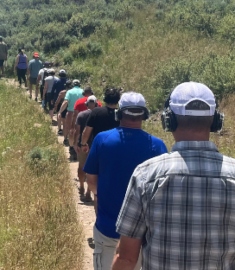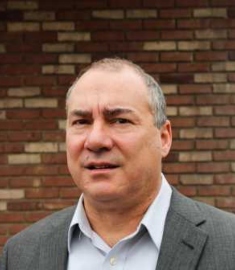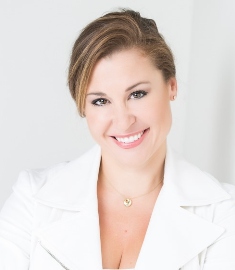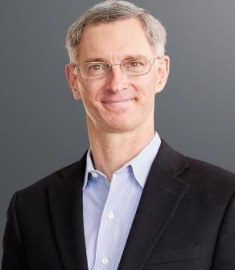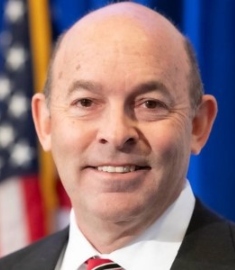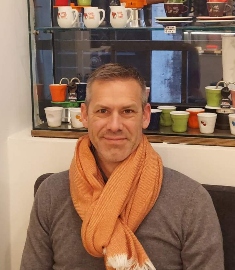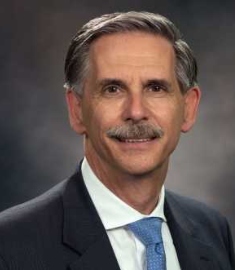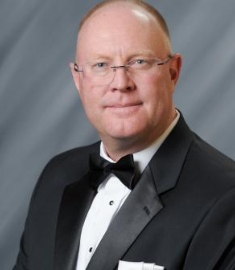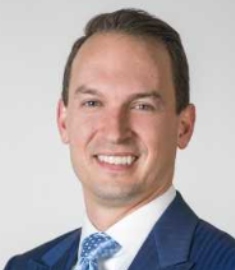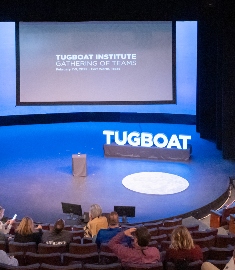Tugboat Institute Summit 2022: Magic in the Mountains
Something extraordinary happened in Sun Valley last week. After two Tugboat Institute® Summits adapted to COVID, we were back in person in record numbers. The magic that happened throughout the week was clear evidence of the power and importance of our wonderful Evergreen® community.
Wednesday and Thursday mornings were spent hearing from 18 outstanding speakers on topics ranging from the exploration of different mechanisms to scale, to the sharing of personal challenges and journeys, to consideration of philosophies of leadership, to the importance of love.
The talks left us thinking in new ways, feeling deeply, and profoundly enlightened. Jeet Kumar of In Time Tec opened the talks on Wednesday by sharing his thoughts on love and leadership. His story opened our hearts and brought the audience, both in the theater and online, into a space of intimacy and support that was sustained throughout the rest of the experience. Lisa Ingram of White Castle shared what innovation looks like over time in a 100 year-old company. John Garrett of Community Impact Newspaper whetted our appetites for more conversation about the possibilities presented by partnerships with economic development groups in a short, 5-minute talk and then Dennis Jaffe, Senior Research Fellow at BanyanGlobal Family Business Advisors, shared his considerable wisdom about how to think about future generations as we consider the path forward for our businesses. We had an astounding and unique experience led by the entrepreneur, musician, and magical human being Murray Hidary. Murray shared his thinking on creativity and then invited us to connect with our creative centers as he performed an original, improvised piano concert. The experience was moving in unexpected and deeply profound ways. Following Murray’s performance, John McCullough of James Avery shared how and why James Avery became a vertically integrated company, and the competitive advantage it has given them. Mel Gravely of Triversity took the stage next for a 5-minute update on his thinking about conversations about race in America since he last presented on the topic at Summit 2021. Mel was followed by Courtney McKee of Headframe Spirits who shared her inspiring story of extraordinary perseverance and triumph in the face of challenges. Finally, Dave Thrasher of Supportworks shared his family’s journey scaling their company in a variety of ways, and the lessons learned through each experience.
The talks on Thursday were equally outstanding. We began the morning with a pre-recorded conversation between Dave Whorton and one of his heroes, the legendary Tom Peters, who spoke about his book In Search of Excellence and his current perspective on the topics he discussed in the book. Jane Blain Gilbertson of Blain’s Farm and Fleet told the story of fighting a private equity entrant into her markets; in her talk, she shared her disturbing and inspiring story of pulling her entire team together to beat a private equity-driven attempt to undo the Evergreen company her family had built over three generations. Bobby Jenkins of ABC Home & Commercial Services gave a 5-minute talk that offered insight into the opportunities available to businesses when they partner with their Chambers of Commerce, and then Samson Liu of SOH Dental shared his story of starting his own Evergreen company after the disillusionment of working in a company bought by private equity. We were then honored to invite Kevin Cahill, Executive Director of the W. Edwards Deming Institute, to the stage. Kevin shared his grandfather’s Deming philosophy with us, in particular the importance of looking at the shortcomings of the system, not team members, in People First companies. After Kevin, Brad Cleveland took the stage for a short, 5-minute talk on Leading the Customer Experience, which just happened to be inspired by a conversation he had with W. Edwards Deming very early in Brad’s career. Finally, Tugboat friend Anese Cavanaugh, Founder and CEO of Active Choices, brought us back to ourselves and invited us to consider self-care and self-partnership as essential leadership skills. Following Jeet’s powerful opening talk, Anese’s talk served as a wonderful bookend to the two days, during which we were exposed to ideas, practices, and stories that will help bolster our businesses, our families, and ourselves.
The afternoons were spent in dialogues with speakers over lunch, and then in a variety of activities that allowed attendees to share time in the beauty and magic of Sun Valley. We celebrated the friendships we cherish and got to enjoy, the new connections that we look forward to nurturing and growing over time, and the support and love of our incredible community.
Tugboat Institute Summit was magical, as it always seems to be when Evergreen leaders gather. Fortunately, we have more opportunities to gather again on the horizon!
Finding Room for Innovation in an Age-Old Industry
When you are selling a product that has been around for 4,000 years, it’s sometimes hard to see yourself as innovative. But even when your product–in this case milk–doesn’t evolve much, there is plenty of room for innovation in your processes and your business.
The milk business is a low-margin, commodity-based business that is highly regulated. Therefore, it can often seem like the right move to constantly look for ways to lower prices just a little, take some business from the competition, and drive volume up to increase your margin. But in my time as President of Turner Dairy Farms, I’ve learned that the seemingly ‘safe’ path is not always the best. As an Evergreen® business that is willing to innovate, pivot, and try new things, we have continued to grow and thrive since we were founded 92 years ago. In many cases, we’ve had to resist the urge to reach for what seems like the obvious answer because, just as often, it turns out it is not the best.
The first mistake many in our industry make is cutting corners and sacrificing taste. In the food industry, the results of customer surveys consistently tell the same story; the number one reason a consumer buys a food or beverage item is taste. Always. As soon as you start looking to cut corners, taste suffers and any advantage you may have gained evaporates. If your product doesn’t taste good, even at a lower price, customers won’t stay loyal.
A great example of this is chocolate milk. One of our biggest markets for chocolate milk is schools. A number of years ago, we had a competitor who gave us a lot of trouble because their prices were so low. They were winning a lot of school contracts. One day, we were doing a taste cutting of the chocolate milk brands in our market, which we do often, to make sure Turner’s Milk always tastes the best. The one from our competitor, who was beating us in the schools, came out of the carton and into the cup and it wasn’t even brown. It tasted awful and we couldn’t believe anyone would market that product!
Right as we were doing our taste-test, our chocolate supplier happened to stop by. We didn’t know it, but he was selling that substandard chocolate to our competitor. He didn’t say anything to us at the time, but he went home and talked his family into discontinuing that low-end product. This is an example of compromising values, and when you do, it eventually damages not only your relationships with your customers, but also with your suppliers and industry partners.
Another risk in our industry is customer boredom. Dr. John Stanton, Professor of Food Marketing at St. Joe’s, says that “the milk case is the great white tundra of the supermarket because it’s cold, white and nothing ever changes”. We accepted his challenge a few years ago and started playing with Limited Time Offerings (LTOs) on flavored milk–flavors like Chocolate Peanut Butter, Cookies N Cream, Chocolate Covered Strawberry and Birthday Cake! Initially, we made these to coincide with the big holidays. They were a hit, so we added some more at different points in the year. It was expensive and unpredictable, and we were always guessing about the demand and the supply we would need. Aside from creating little boosts in our sales periodically throughout the year, it did something else really positive; all of a sudden, customers had a reason to stop in front of the milk section. Imagine that! We found that sales of white and chocolate milk increased when we offered a fun flavor. An area of the store that historically held few surprises suddenly caught their attention and offered a novelty.
The LTO initiative was such a success that we have since brought it to the schools. We partner with the school nutrition teams to bring in a low-fat version of our best flavored milks a few times a year, just when interest in school lunch is waning, and kids are falling into a slump. A month or so into the fall semester, for example, when the excitement of going back to school has died down and routine sets in, we bring in a new milk like Cookies ‘n Cream. It’s fun, it’s different, and it gives them a little boost. Although we don’t charge our schools more for this milk, and you could therefore argue it’s not a very smart initiative, we have found that on at least two fronts it’s a win. First, the schools love it, and we win more contracts. Second, we are forging a relationship with kids who will, before we know it, become young adults and young parents. They are our future customers, and they will know and trust us and keep coming to us when the choice is theirs to make.
To be successful for 100 years we make different choices than we would if we only aimed to be successful for this year. When we shift the lens from the consumer to the employee, we feel strongly that many compromises that might save us money are not worth the cost. As an Evergreen business, we pride ourselves on taking great care of our employees, treating them like family, paying them a better wage than our competitors, and making sure they feel valued. Some of our huge, industrialized competitors run shifts 24 hours a day. We do not. We run one long shift each day so that we have the margin to do things right when problems arise. We are a medium sized operation, so our competitive advantage does not live in the high efficiency of the larger industrial dairies. Rather, it lives in the high quality of the personal attention to detail.
In the last ten years, the milk industry as a whole has only seen one year of sales volume growth, but Turner Dairy Farms has grown eight of those same ten years. As an Evergreen company, quality and values matter more than anything else. Obviously, we must be profitable to stay in business, but we focus first on protecting our constituents, and then on protecting the bottom line. Over the years, this strategy has been the key to our long-term success and growth.
Lessons From a Turnaround CEO
When I agreed to come on board as the turnaround CEO of SKG, the exclusive dealer of MillerKnoll furniture in Central, South, and West Texas, I understood two things very clearly. First, there were problems to fix. Second, the potential for a great company was there.
Although I had not yet adopted the lens and language of an Evergreen® Business, I can tell you now that when I joined SKG, they had several of our principles solidly in place, but were in great need of improvement on the others. SKG has always been a people first company, they have always had a strong culture, they have always been highly focused on the customer experience, and they have always been private.
My explicit task when coming on board was to help advance the profit and growth of SKG. I discovered, however, that there were other issues that needed to be addressed to get the turnaround underway. SKG lacked a clear purpose, and they were not an innovative organization.
The fundamental problem with the purpose of SKG when I joined was that not everyone agreed on what it was. The founder had a purpose that drove her work – people first – and some key board members had a different purpose – growth and profitability. To me, those were all important but sometimes came into conflict. We needed to unify around one clear purpose. I started driving change from the articulation of our new core compass: At SKG, we are innovative, we take care of people, and we drive impact in our community, both locally and globally. As I stepped into the work of rebuilding this company, I led with this vision.
I started with people. I had some great people on my team and many of them are still here today. But the organization, down to the physical space of the office, was all wrong. I had to get the right people in the right places, both literally and on the org chart. The process felt like a shake-up to some and was further complicated by the fact that the company’s founder was still in leadership and very present. I don’t think there is any other place to start when you set out to re-build a company and it was hard work.
I am an operator, so after the initial reshuffling was underway, I turned my attention to the team that would drive the profit and growth. As a growth-focused leader, I was able to see where the market potentials were and I focused my attention on making the changes and setting expectations in the sales department that would set us on a path for the growth I was targeting. This work was no easier than the work on the people front and I found myself spending as much time and energy dismantling the structures that were in place as I did on the rebuild. It was effective and in just about three years, we moved from a $13M business to a $60M+ business.
Once I had the organizational structure, the physical office, and the sales teams where I wanted them, I started a systematic review and restructuring of each department. I found as I went that we had to break down almost everything and rebuild it, from our target focus to our marketing and branding, our core operations systems, our service platforms, our trucks, our uniforms–everything!
We came out of the rebuild strong, focused on our purpose, and in a great place. Around this time, I was able to become a majority owner, so internal friction with the founder finally eased as well. We were able to charge forward on the innovation front, inspired by our new purpose, and I was extremely proud of the progress we had made. Then, Covid.
Through the pandemic, we lost a lot of ground and in the last year or so, I feel in a way like I have had to do the work of rebuilding SKG all over again. But this has also afforded us some great opportunities, especially on the innovation front. Business looks different than it did, so we should be a different company. We not only have to think about the changes to our own work environment, but since we are in the business of creating work environments for our customers, we are also able to engage in exciting re-visioning of what “creating a workplace” means. Although it’s been frustrating on some levels to do it all again, I am grateful that we had the new opportunity to improve and I love the way we are emerging from the pandemic – refreshed, new, and stronger than ever.
I am extremely proud of the work we did and what we were able to achieve, but hindsight allows me to see areas for improvement if I had it to do over. Our work meant a great deal of change for our employees, and it was tough. I assumed that as we re-structured, the culture and purpose pieces would naturally fall into place, and they did, but slowly. I spent an enormous amount of time and energy managing people in the early phase of the turnaround. In retrospect, if I had I brought on my HR Director right at the beginning, it could have helped us be more intentional about that work and lay out the vision before we started moving everything around. As soon as everyone came on board and understood the why behind the changes we were making, things got easier.
Aside from learning a lot about rebuilding businesses through this process, I learned a lot about myself. I am a charger. In some ways, coming in as a turnaround CEO is harder than starting a company from scratch. Before you even get to the building, you first have to dismantle a great deal. But I love it. The rewards are immense. I am invigorated by this work.
Leading for Innovation
Innovation at Michelman is unique; we do it highly collaboratively, both with outside partners and within Michelman, using the three elements of creativity, connection, and execution as drivers. Furthermore, innovation doesn't happen by accident; it begins with leadership.
Michelman is a people-first, purpose-driven, Evergreen® family business built for long-term sustainability. We are a global developer and manufacturer of specialized sustainable chemistry used in agricultural and architectural coatings, digital printing, foodservice packaging, and advanced composites for automotive and aerospace. And innovation is central to who we are; our purpose is Innovating a Sustainable Future. So, what does this look like?
Creativity is the Big Idea
It starts with creativity, and it starts at the top. At the leadership level, we set a strategy and identify areas of the industry we are poised to win or areas where there is a need or a problem to be solved. This strategy sets up guardrails for our teams to keep them pointed in the right direction. Once they have direction, they are free to imagine and create. We have worked hard to establish a culture where new ideas are welcomed and encouraged. Above all else, we want to make sure our associates share all great potential ideas. We know that innovation is not a linear process, so there has to be room for ideas that fail and ideas for which the markets are not quite ready.
In addition, we have found that building cross-functional teams helps problem-solve in the early phases of innovation. For example, a group of chemists may approach a problem from one angle, but then someone in HR or marketing might come in and see a possibility or an issue that was not obvious to the chemists.
I call these "cold eyes." Having someone who hasn't seen it before–who has cold eyes–study an idea is a highly effective way to identify and solve problems quickly before getting too far into the innovation process.
Connection answers the question ‘Why does it matter?’
Once we have a great idea and have developed it to a point where it is practical, we enter the connection phase of the process, which involves collaborating across functions and business segments at Michelman and with other stakeholders in the industry. As an Evergreen company, we are in an advantageous position because of our commitment to Paced Growth. During the connection phase, our focus on the long term inspires confidence in potential co-collaborators and partners. Furthermore, it assures both internal and external parties that we will devote the time and effort necessary to bring the innovation to fruition.
We have found that bringing partners in at this early stage of innovation is the best way to move the process forward efficiently, identify and solve potential problems, and create a competitive advantage. A powerful example of this was our innovation in the digital printing space. Digital printing emerged as a highly customizable and rapidly moving market, but the technology did not provide excellent print quality to a wide range of plastic film and paper types. So, we set to work innovating to develop advanced material and technology to improve ink receptivity, rub resistance, and image quality on paper and film material for labels, packaging, and other commercial printing. Early on, we reached out to partner with Hewlett Packard and developed the idea together; they produced the digital print presses while we developed the print-receptive technology. Together, we quickly positioned ourselves as leaders. The connection in this particular case was that the industry wanted high print quality with variable printability, such as the Share a Coke campaign, where each can has a different name.
Overall, Michelman's six corporate values of curiosity, collaboration, giving, integrity, respect, and success outline our highest priorities as a company. Our goal is to maintain and develop long-term, fair, and trusting relationships, and this culture of trust and respect allows innovation through collaboration to happen. We also utilize nondisclosure agreements (NDA) and other partnership agreements to protect innovations and other trade secrets to remain sustainable and Evergreen.
Execution facilitates commercialization
Finally, the execution phase is where the idea's value is realized. Provided that the market is ripe for innovation, we lead our teams to manage the details of the production, supply chain, distribution, and sales. Execution allows consumers to gain value from the innovation, resulting in Michelman's revenue growth. We find that our partnerships formed during the connection phase enable us to execute reasonably quickly. The right partners can help solve any logistical issues and help commercialize the innovations.
At our Evergreen company, which is driven equally by Pragmatic Innovation and our strong sense of Purpose, collaboration is a critical element of all three phases of innovation. In the creativity phase, the cross-functional teams ensure that a new idea will add value in the real world. During connection, collaboration is the driver. And during execution, the closer you can work with the partners you need to bring your product to market, the better and more efficient your execution will be.
Innovation is not a product. Nor is it simply an interesting idea. As leaders of Evergreen companies, our job is to create the right environment, characterized by a culture of curiosity, room for experimentation and collaboration, and clear guardrails. Once this is in place, there is no limit to where innovation can take you.
One Size Does Not Fit All
I joined my family’s irrigation supply business in 1985, just as they opened their 12th location, and the first outside of California. I guess you could say that expansion was part of my story at Ewing Irrigation & Landscape Supply from the very beginning. As the 3rd generation President & CEO of an Evergreen® family business that now spans 30 states, expansion–through organic growth and acquisition–has been the order of the day and has taught me a plain but profound lesson: one size does not fit all.
Irrigation supply is, in its simplest form, a low margin business. We stock about 3,500 different parts in each branch to enable us to have enough inventory to supply an average job. In California, we found that the population supported locations as close as a 20-30 minute drive apart, and the level of population density dictated how we transported our products, organized our teams, and stocked our warehouses. Our core customer valued proximity and the inventory moved quickly, so that drove our expansion within the state. When we set out to grow into Arizona, our California business model was working well, so we thought we had a solid plan.
Some businesses can just replicate themselves from location to location and it works. Think of Starbucks or Walmart. We quickly learned, however, that this didn’t work for our business.
As it turns out, Arizona is not California. The population density is significantly less, and we found we had to adjust our models at just about every level. The products that worked well in California did not work as well in Arizona and the population couldn’t support stores so close together, so we had to change the way we stocked our supply centers and how we transported material. When we moved into Texas, the population density was more like California, but there were other significant differences. The target customers were bigger, the jobs were bigger, the equipment had to be bigger, and we had to adjust.
Since then, we’ve moved into many new markets, and we are getting better at being market adaptable. We evaluate a new market based on the following criteria of a Metropolitan Statistical Area (MSA): population, Gross Domestic Product (GDP), and above all else, housing growth. What we’ve come to expect is that markets that appear similar by the numbers reliably turn out to be unique.
Not all the surprises created difficulties; we hesitated for a long time before moving into “cold climates,” or ones that experienced the four seasons, imagining that they were not candidates for the type of irrigation systems we had been installing all over the west and southwest. It turns out that this climate created many repeat customers for us; when the pipes froze, as some of them did every winter, the customer would call us in the spring to re-install some of the equipment we had installed just a season before! It’s just part of the process in that climate. This continual base-maintenance has proven profitable and reliable, so we are looking at the East Coast as an area ripe for further expansion.
Up until 2018, most of our growth had been organic, with just a few small acquisitions. In 2018, we made our first significant acquisition of a company that focused on hardscapes, instead of irrigation. Water supply was starting to become an issue and, as a result, customer demands were shifting. Before, everyone had to have a green lawn. Suddenly, people were creating outdoor spaces that used less water.
We spent time learning how to adapt to this business, which proved to be quite different from irrigation. For irrigation, we typically stocked our inventory in warehouses that were 8,000 -10,000 square feet, sitting on roughly an acre of land. For hardscaping, we realized that we needed more land but could get away with fewer buildings, as a lot of the product could be stored outdoors. The product is also much less varied; we stock only about 120 items in an average yard to supply an average job, which simplifies many aspects of the process.
The most significant advantage of acquiring the hardscape businesses and entering this new market is that, as we look to expand, we already have a well-established and extensive customer base through our irrigation businesses in many areas of the country. Thanks to our name recognition and the great relationships we have with our customers as an Evergreen® company, we have found that when a customer decides to shift toward hardscape, they turn to us.
As Ewing grew organically, we learned that moving into a new market requires firepower and a willingness to tweak our model. When the firepower or the changes required appear too great, we make the call to stay out of that market for now. When we started making acquisitions, adaptability and willingness to reimagine established practices were again the keys to success.
Despite, or maybe thanks to all these learnings, we are looking toward the coming years with optimism. Between the expansion of the hardscape business as we develop it in parallel to our irrigation business and the organic expansion that now seems promising in colder climates, we see a path to future growth that has us excited. But if I have learned anything through the last 15 years, it’s to never get complacent, and to expect that even the brightest of futures will require that we stay nimble, open to change, and willing to roll with the surprises.
A Business Built on Reciprocity
It may go against what we’ve all been taught about business, but I have come to believe that collaboration, not competition, is the key to business success. There are guidelines and limitations, of course. For me, the most important one is finding like-minded people, who share a vision of the right way to live and conduct themselves, and who are eager to contribute something of value to the world. I recently learned a new word for this– Evergreen®.
My story started like many, with a chance meeting. I was running my home repair business, Redeemers Group Inc., in Memphis and, through some friends in the East, I was contacted by a product supplier in Connecticut who was seeking a partnership. They had a basement waterproofing business and some high-quality products and wondered if I might be interested in learning their method for reaching new customers and their process for waterproofing. In exchange, as my business increased, I would sell their waterproofing products to my new clients. We didn’t have a contract, but it made sense and I trusted them, so I agreed. It led to significant growth for my business and, as a result, increased sales for them. Our customers got great service and great products. It was a win-win-win. This experience opened my mind to a new world of possibilities.
A few years down the road, I had the great fortune to meet Greg and Dave Thrasher, from Omaha, NE. Greg founded Supportworks Inc., a foundation repair (and today, a Certified Evergreen®) company, and his son Dave is now President. In the Thrashers, I recognized the kind of kindred spirits I was looking for, and although none of us had become aware of Tugboat Institute® yet, we became fast friends. We struck a deal similar to the one I had made with the company in Connecticut – Supportworks taught us their foundation repair process, and as my business grew, I sold more of their products. Another win all around.
Now I had two collaboration partners who were suppliers and I loved the growth the partnerships had created. My inclination for collaboration was growing stronger and I found myself looking for opportunities to collaborate further at every turn. My mindset had shifted, and I was ready for more.
My next opportunity took me back to Connecticut. One best practice I had learned from the basement waterproofing company in Connecticut was to share materials – about our company, our products, and the repair process – with a new client in advance of the first site visit. Among other items, we provided a book the company had created that explained the specific repair process in detail. I noticed over time that their guidance was great, but that there were gaps; most notably, we were doing a lot of mold remediation, and there was no book for that. So, I wrote one. I took it back to the supplier and asked if they’d be interested in buying it and in offering it to the other contractors they worked with and they said yes. It is now sold all over the US, Canada, and Europe.
By this point I was a true believer in this type of supply chain collaboration and was highly inclined to innovate further. When working on one job, trying to problem-solve the process of lifting a house off a certain kind of foundation, I had a Eureka moment and imagined a device that would help the process. I had a friend create some CAD drawings and took them to Dave and his team at Supportworks. They thought it looked great, we got it patented, and now they sell it to all their dealers.
Private equity has come knocking several times in recent years and it’s easy for me to send them away. I know that without remaining Private, among many other things, I would not have the freedom and the independence to pursue Pragmatic Innovation collaborations like these with industry peers. Innovation requires the freedom that being an Evergreen company provides. My experience collaborating with like-minded supply chain peers - notably those with Evergreen companies - has helped my business grow and succeed, and it’s helped me approach my work with even more joy and creativity. I can’t wait for more.
Getting Back to Built to Last
Every leader carries a toolbox filled with tools they collect over time. I have been on my leadership journey for some time now and have filled my toolbox with the tools that work best for me. They include Stephen Covey’s Speed of Trust, a focus on communication and organizational effectiveness, the marriage of disciplined decision-making and objective critical thinking, Jim Collins’ Built to Last, and most recently, Tugboat Institute’s® framework of the Evergreen 7Ps®. And through my work with each of these tools, there is one more that I have developed myself, over time. I call it the Six Lanes of Logic.
I joined Schaeffer Manufacturing Company as President with the objective of ensuring that this 183-year-old company was in position to last another 180 years or more. My first step was to assess Schaeffer’s readiness to meet this objective. During my first four months, I embarked on a listening tour, and I assessed that trust throughout the organization was low. There was a lack of clarity of roles and no clear communication. As a result, organizational effectiveness and engagement were low. Employees did their jobs without a clear understanding of the larger purpose of the company and how they fit into it. Schaeffer was not in a ‘Built to Last’ position. Thanks to my toolbox, I had the tools to address these issues, so I set to work.
I used these tools to work several initiatives in parallel: re-establish trust, leaning heavily on The Speed of Trust, clarify roles, and re-open the channels of communication. My focus here is the use of the Six Lanes of Logic.
The Six Lanes of Logic is a tool I have had in my leadership toolbox for 20 years, tweaking it and adapting it as I go. It’s a disciplined process for problem solving and decision making. This tool would enable the work of re-establishing organizational effectiveness at Schaeffer, engaging employees across departments, improving our ability to think creatively, and setting a structure in place that would protect what needs to be preserved for the next 100 years, all while leaving space for innovation and growth. The process gathers a representation of all stakeholders involved in the issue at hand and, as a result, touches every aspect of the organization.
The First Lane is where we assemble a representative group of stakeholders to define and agree on what the problem or objective is, agree on key criteria that any solutions must have, and defend why this must be solved with 3-5 logical reasons. This part seems simple, but I find that most of the time, people walk around with a hammer looking for a nail to hit. In other words, they come into the conversation with a solution and are just looking for a problem to apply it to. So, in this first lane, all stakeholders agree what we are coming together to accomplish and get to the ‘how’ only after that is done. At this stage, importantly, we also identify who has decision rights.
In the Second Lane, the group brainstorms options that could achieve the stated objective, but with no critiquing to assure openness, inclusion, and creativity. We have identified the problem we are trying to solve – how might we fix it? With our team, we collect any ideas people want to share, and because we have a group of stakeholders, we have a variety of perspectives represented.
Once all options are identified, we move into the Third Lane. In this lane, we evaluate the options against the criteria we established in Lane One. We lean heavily on data here, because it’s necessary to making sound, solid decisions. There is no room for opinions in this lane.
In Lane Four, we select a path forward and finalize the decision, again as a group. Lane Five operationalizes the decision with metrics to track results. We build our team, our action plan, and our plan to measure the success of the initiative. We get to work.
Lastly, in Lane Six, we a look back at the results of the initiative and examine the process from start to finish. As a group, we aim to understand what we did well and what could be done better. I find this process is key to enabling a critically thinking organization and helps ensure that we learn and improve our processes as we go.
When I first present the Six Lanes of Logic to people, they think it will slow us down. In the early stages, it is indeed slower than processes they have used in the past. But like the Speed of Trust, taking the time to walk through the process carefully from the beginning to the end contributes to improved effectiveness overall. We are less likely to leave gaps in our process, we are more likely to imagine potential problems before they arise, and, best of all, because the process is so collaborative, we engage all stakeholders. When people are contributing ideas to solutions, they have a stake in the outcome and are much more engaged. Every aspect of the process is better.
My philosophy and belief are that organizational structure is the key to building a long-lasting Evergreen® company and the Six Lanes of Logic have helped us set a solid and enduring structure. The discipline behind my tactics at Schaeffer is something the stakeholders have had to work to learn, but now it is becoming automatic. Schaeffer is experiencing a significant increase in trust, it has rediscovered its clarity of purpose, and it is experiencing empowerment across the organization through critical thinking. It is no longer just my initiative; our whole team is now engaged and committed to ensuring that Schaeffer Manufacturing Company is Built to Last for at least another 180 years.
How Old-School Apprenticeship is Shaping Our Future
As an Evergreen® Company, we cherish our independence, our flexibility, and our autonomy. It might, therefore, seem obvious that a partnership with such a structured and bureaucratic organization as a trade union is something we would take great pains to avoid. In fact, the opposite is true.
Chula Vista Electric started in 1925. Like many successful 97 year old companies, we have learned how to react to our environment and adapt as we grow. CVE started as an appliance retail store. As people bought appliances, they needed electricity in their homes to power these devices; this spawned our electrical division, which has been the company’s focus ever since.
In 1945, the need for trained electrical workers was growing in San Diego and so, along with others in our industry group, we started running apprenticeship classes. In 1976, we formalized a partnership with the union; The San Diego Electrical Industry Training Trust was created with equal representation from management (the company owners or NECA) and labor (the union or IBEW). Today, the trust governs our apprenticeship program, which is recognized by the State of California and sponsored by Palomar College. This allows all of our students to not only learn a trade but also to earn college credit towards their Associate of Arts Degree.
Our program has grown and thrived over the years, providing apprentices for 56 electrical contractors in San Diego and Imperial County and has approximately 600 students participating. It’s a unique collaboration. The contractors, who are signatories to the collective bargaining agreement, fund the program. Through the collective bargaining process, we have agreed that for every hour that one of our employees works, 87 cents is invested in a training fund. With this funding, we have been able to build a high-quality, comprehensive program that none of us would have been able to create on our own.
To be accepted into the program, applicants must have a high school diploma or a GED, a year of algebra, and they must take a few basic aptitude tests. If they meet these basic criteria, we invite them to interview. Our program has become so popular that we average 300 applications for every 30 positions available.
Once in the program, apprentices spend five years attending classes two nights a week and working one-year rotations at four or five different companies. There are large shops, small shops, some that do high rises, some that do underground—all the different facets of electrical. Spending time at a variety of companies gives apprentices a deeper and more thorough understanding of the industry. Ultimately, the idea is that they get the theory and science at school, and then practice the hands-on by day out in the field. One of the best parts and a piece of what makes this so valuable is that their school is tuition-free. We call it “Earn While You Learn.”
The impetus for this apprenticeship program has not changed much from what made it so powerful and unique in the early days. Contractors need electricians. We need them to be trained well, uniformly, and thoroughly. It is in the interest of the customers, apprentices, and contractors alike to ensure that we are producing a pool of highly qualified electricians.
It’s a win for our apprentices too. The jobs we create are great middle-class, upper middle-class jobs, with pensions and health care. I'm able to offer not just a job, but a career. We have several people who have been with our company for 25 to 30 years. They are not just employees, but friends.
The risk, of course, is that we put effort, money, and time into training these apprentices, and then, at the end, there is no guarantee we won’t lose them to a competitor. But this is where being an Evergreen company plays to our advantage; we believe we treat our people better than the competition, so we have had great success in recruiting and retaining employees. In addition, we like to promote from within, so the growth doesn’t stop after the apprenticeship is over. Regardless, contributing to something that ensures we will have a deep pool of qualified, talented electricians is easily worth the risk of losing a few people here and there.
Amid the Great Resignation, the value of this program has come into sharper focus than ever. This is an excellent vehicle for developing the talent pool we need to keep growing and thriving. And it just so happens that we've had it up and running successfully for decades, so we're in better shape than most firms today.
My father started his apprenticeship in 1965 and would go on to become sole owner of Chula Vista Electric. A decade ago, he passed the reins on to me—a move that wouldn’t have been possible without my graduation from this same apprenticeship program in 1989.
My role with the apprenticeship program is deeper than most. I’ve been an apprentice, an instructor, and I currently serve as the committee chair overseeing the program. I look back and think that I was very lucky—being accepted to the program myself and getting to do what I love. So much that I encouraged my son-in-law to get involved. He's been through the program and he's now a foreman for my company. My youngest son is currently a fourth-year apprentice for one of my competitors. It’s that rotation part of the program, to make sure he gets a well-rounded training experience–I'll get him back, too. I attribute everything that I have to this program, and everything at our business is built around it. Now, I'm trying to pass down my passion for this unique partnership to the next generation in our company and within our industry group more broadly.
People First Drives Pragmatic Innovation
When you have employees working on oil production platforms and you are committed to People First, every person in your company must be serious about safety.
People First came naturally to Danos when my grandfather and his brother-in-law started the company in 1947; the initial team was almost all family members. By the time the company got big enough to hire from the outside, the culture of care and connection was firmly set. As an Evergreen® company, People First defines and drives everything we do today. It’s in our DNA.
We are in a high-risk industry: operating and maintaining oil platforms, many of which are over 100 miles offshore. We have 2,500 employees today, working across Texas, the Gulf of Mexico, and other remote parts of the country. We attribute much of our success – on the safety front and elsewhere – to the way we lead from a culture and values standpoint. We do this while tapping into our team’s insights, creativity, and ideas and encouraging experimentation with new technologies to bolster safety through Pragmatic Innovation.
Although our early innovations were not technological, they did have a notable impact on safety. The first one that comes to mind happened in the early 1950s. During that time, crew members boarded boats using ladders attached to a vessel's exterior, which was very dangerous. So, we designed and built a tugboat with an innovative safety feature – an interior ladder that brought workers from the pilothouse to the galley and the engine room without going outside.
In the early 2000s, we began hosting Safety Focus forums. These intensive, one-day safety events happen throughout the year in key locations where our employees live and work. The day kicks off with a few safety presentations from management to set the tone, but the event mostly focuses on group work, breakout sessions, and time together. The format allows our employees to experience our culture of collaboration through open and honest communication and relationship building. We teach at these forums, but more importantly, we listen. From experience, we know we can learn as much from our employees on the ground about where we can improve on safety as they can learn from us.
One of our first true technological innovations came years ago as an improvement to something that existed already in our industry called Behavioral Based Safety (BBS). We track near misses–incidents where small changes in conditions could have caused injuries. For example, a common interaction with equipment might result in a brush burn, but the incident makes us realize that the potential for serious harm is there, so we enact changes to the way our people interact with that equipment. Although this practice is standard across the industry, it has always been inefficient and slow. So, we decided to start collecting feedback on forms that we could read with a scantron (a technology innovation at that time) to process more information faster.
More recently, with smartphones, we figured out a way to use a simple app to collect and share the data in real-time, which we use today. All near misses are recorded on the app and reported company-wide immediately; notifications pop up on everyone’s phones. We didn’t invent BBS, but as far as I know, we were the first ones to use an app to create instant push notifications. These experiences with the Safety Focus forums and the app reinforced for our leadership team the importance of involving the entire team in Pragmatic Innovation.
In 2015, we decided to try something new by opening an innovation lab in Louisiana. We bought a drone, virtual reality (VR) goggles, and a 3D printer. We invited employees to explore the new tech tools. No one was sure what we were after at first, but eventually, our team came to understand that this lab was about unleashing their creativity. Their ideas started emerging.
As we began understanding the potential for tapping into our team’s creativity, our IT department took the initiative to help us innovate in safety. They developed a whole new platform to capture, organize, and analyze our safety-related data – near misses, serious accidents, and proactive efforts to prevent incidents. As a result, we ended up with a unique, fit-for-purpose platform that has significantly improved accountability, helps identify risks, and generates risk mitigation actions that keep our team even safer.
More recently, we’ve been working on an exciting technology-enabled safety innovation that leverages VR. We built a virtual oil platform – just like the ones we service and maintain — for employee competency testing and training. So instead of having an experienced trainer and new employee meet at a shore-based heliport, fly out to an oil platform in the middle of the ocean, and verify the new employee’s competency on-site, we can do all of this in our virtual oil platform. It’s much safer and has the added benefit of allowing us to test and train every employee on a much wider variety of equipment and different platforms.
We have taken this program even further by creating animation that allows users to “peel back the layers” of the equipment and see inside to better understand the components and how they function. I did this virtual “peeling of equipment” myself, and it helped me understand the processes we manage in ways I never had before. This innovation has made the training experience for new and returning employees much safer. And it all started with placing a few VR goggles in our innovation lab and creativity being unleashed.
If you are committed to being People First, as we are at Danos, safety is a value. We are proud of the success we’ve had on this front. Our OSHA rate, or rate of accidents per 200,000 employee hours, is among the lowest in the industry. We attribute this success to our 75-year history of People First values and strong culture, enabled by our safety programs and Pragmatic Innovation. When you take care of your people and tap into their energy, ideas, and creativity, things can take off in exciting and unexpected directions. For us, it was safety first. We’ll see what’s next.
Tugboat Institute Gathering of Teams 2022
It took both perseverance and a dedication to purpose to make the 2022 Tugboat Institute® Gathering of Teams possible, but last week we managed to pull it off, and it was outstanding.
At this hybrid event, over 60 people virtually joined the 300 in-person attendees. Between challenges presented by the lingering Omicron surge and supply chain issues that threatened to delay the delivery of materials, we had our work cut out for us, but the dedication and extraordinary care of our entire Tugboat community overcame it all. We are so proud of the efforts of all attendees, and of the fact that our event was such a safe and joyous one. For two and a half days, our members and their teams shared learning, ideas, experiences, and fun and emerged inspired to pursue their Evergreen® goals with renewed passion and energy.
Throughout the event, which was comprised of a mix of TED style talks and smaller, group workshops, we structured our learning around the framework of the Evergreen 7Ps® principles.
After an evening of exploring mini-games and the philosophies behind the Great Game of Business with Steve Baker, Dave Whorton opened the series of TED style talks with a reflection on Purpose. Dave’s talk built on the conversations about Purpose from our visits to Edward Jones and Clase Azul last fall, as well as Hubert Joly’s book The Heart of Business about the improbable, and very Evergreen value-aligned, turnaround of BestBuy.
Borrowing from data shared at Edward Jones, Dave showed the powerful cultural trend of employees working for and customers buying from, referring to, and protecting companies with an authentic Purpose. He spoke to why he believes non-Evergreen companies--whether public, venture-backed, or private equity owned—might state an explicit, noble purpose, but in practice cannot truly be driven by Purpose due a number of dynamics, including their ownership’s expectations of high returns when push-comes-to-shove. His belief is that authentic Purpose can only be protected and honored through all seasons and over decades in a company that remains forever Private with aligned, concentrated ownership.
Dave used his presentation to unveil our new definition of Purpose, grounded in our collective learning as a community over the past eight years: Having a compelling reason for existing--a north star above all else.
Having set the stage for the learning for the rest of the week, Dave introduced five more TED style talks that further expounded on the power and importance of high performance teams, Pragmatic Innovation, leadership lessons, communication strategies, and the Evergreen 7Ps principles.
First, Bryan Papé shared his powerful personal journey founding and scaling MiiR, a company driven by Purpose and undeniable proof that a great consumer products company can be built and scaled without venture capital. Kristi Tacony Humes, 3rd generation CEO of Tacony Corporation, spoke to the importance of continually asking why and seeking ways to continuously improve oneself and one’s company. Rorke Denver, a former US Navy SEAL commander and acclaimed author, actor, and leader shared wisdom on the dynamics and qualities of high-performance teams. Rich Ledbetter, CEO of Guarantee Electrical, shared Simple Tools for leadership and business success gleaned from a variety of thought-leaders throughout his career. And finally, David Bradford, Lecturer Emeritus at Stanford’s School of Business, encouraged us to be more honest than we might have thought possible with our teams, families, and all important relationships.
The afternoon and the morning of the next day were dedicated to workshops that brought together peers from across many different industries. The conversations were rich and offered insight and ideas that energized and inspired the participants. The enthusiasm and energy of the groups, fueled by new connections and the opportunity to share and brainstorm together, were palpable.
One evening, the group headed to the River Ranch Stockyards for a night of festivities. The venue, which included a paddock of long horn steers, cowboys swinging lassos, and burros offering refreshments in their saddle baskets, was the perfect place to enjoy new friendships, reconnect with old friends, and make some memories.
The two and a half days were full, busy, and inspiring. As is the case every time Evergreen company leaders come together, the energy and joy that fuel our unique Evergreen paths exceeded our hopes and expectations. There is no doubt that our movement and our collective commitment to the Evergreen 7Ps principles are steadily gaining momentum, and that our trusted community is profoundly important to our members and their teams.
